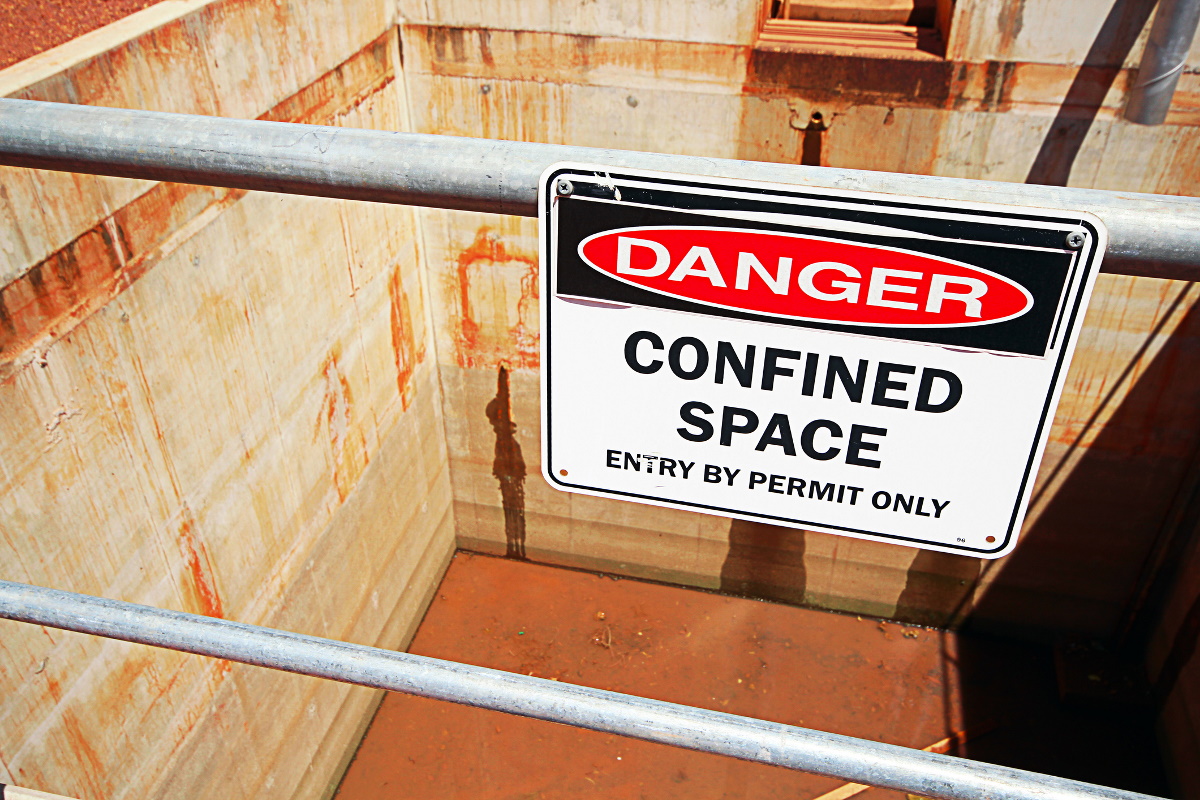Confined spaces generally pose a health and safety risk as they are rarely designed as an area for work to take place. They usually have poor ventilation and therefore pose a significant risk of the internal environment changing quickly and without warning, putting facility managers and contractors at risk.
What is a confined space?
Workplace health and safety laws define a confined space as an enclosed or partially enclosed space that:
- is not intended or designed primarily as a workplace; and
- is at atmospheric pressure during occupancy; and
- has restricted means for entry and exit,
and which either:
- has an atmosphere containing or likely to contain potentially harmful levels of contaminant; or
- has or is likely to have an unsafe oxygen level; or
- is of a nature or is likely to be of a nature that could contribute to a person in the space being overwhelmed by an unsafe atmosphere or contaminant.
Any work carried out in confined spaces must comply with Australian Standard AS2865-2009. Further regulations state “A risk assessment shall be conducted by a competent person or persons before conducting any tasks associated with the confined space.”
The following flowchart will help to determine whether a space is a ‘confined space’ for purposes of the Work Health and Safety Regulations.
How to determine whether a space is a confined space (Code of practice 2018)

What are the risks associated with working in confined spaces?
Confined spaces usually have poor ventilation and are generally not designed as an area for work to take place. They therefore pose a significant health and safety risk as the internal environment can change rapidly.
Specific risks include:
- Airborne contaminants causing loss of consciousness, injury or even death
- Fire or explosions resulting from the ignition of flammable materials or contaminants.
- Due to restricted access they can pose issues with the rescue, or treatment, of an injured person.
Restricted Access Areas (and the difference from confined spaces)
Restricted access areas within a site may present some hazards in common with confined spaces but do not meet all of the criteria for classification as a confined space, these areas deemed to pose a health and safety risk should be signed as restricted access areas.
Restricted areas are not required to be managed with the same criterion as for a confined space but do require a risk assessment to identify the hazards, assess the risks and define risk controls. We recommend you speak with your QED consultant for clarification.
Confined Space Registers
QED conducts site inspections and produces a register, with individual confined space hazard identification forms for each identified confined space.
The scope of this report is to identify areas onsite in order to maintain an up to date register of confined spaces. The assessment will be conducted to identify confined spaces and the general risks regarding access to the space.
For more information on our confined space audit and register service please contact us.


















